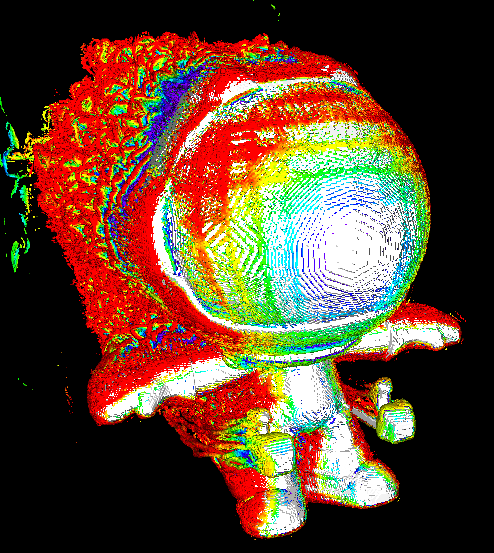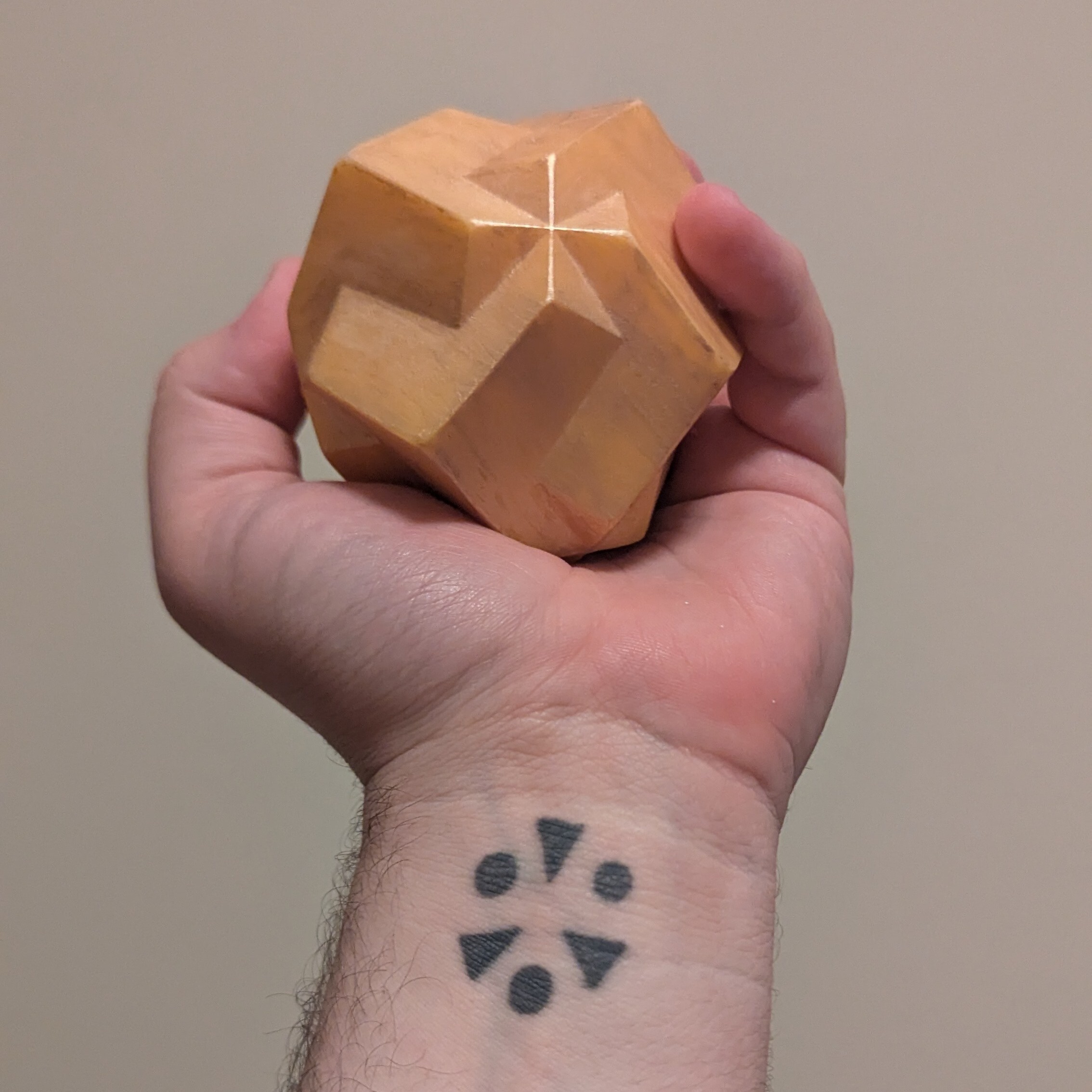Ray tracing isn’t supposed to make things look better, it’s supposed to save development time
If you spend enough time on lighting you can make static lights look better but that’s just it, it takes longer so it costs more
When I had a PS5 and Cyberpunk, I would sometimes switch ray tracing on and off to see if it made a huge difference. Well, the frame rate would be capped at 30 with it on…and I suppose if I stopped and looked around for a bit, it was noticeable, but honestly, I preferred the higher framerate. I’ve yet to see a game that really benefits from RT.
It’s mostly developers that benefit from RT long-term. Not now while it’s optional, but once it becomes a requirement, they can cut a couple of time-intensive steps from the development pipeline.
Can’t wait until my GPU needs 1000W to run :'(
I don’t know but Path Tracing makes CBP2077 and Alan Wake 2 looks like a real next gen game.
Cy Ber Punk? interesting
There is a real reason to not use the “C + P” initialism in online chat these days… on some platforms it’s likely to be flagged & reported by automods/bots/Eye of Sauron.
But I love CP!! It’s so next gen!
That’s him, officer, right there ☝️🤓
I think RayTracing is pushed so hard by the industry because it gives manufacturers an excuse to force consumers to buy better cards to get “the very best”. I have a 4070 and I never use RT.
i wish they would just make more gpu so they aren’t so supply limited geez
Why would they want to do what’s bad for them and good for us? They’re a corporation:)
Raytracing is being pushed so hard by the industry because it makes things easier for devs as opposed to making the games look better for the customer.
There is absolutely nothing about raytracing which makes it “easier” for devs compared to a traditional render pipeline.
The extra performance rquirements alone mean you’re going to be doing more work elsewhere to make up for it, and that’s ignoring the current bugs/quirks with RT in whatever engine you’re using.
Yes, you can skip simulating GI with many small lights. Not a game dev, I work in animation. Up until fifteen years ago this was still a regularly taken approach to lighting scenes, before the advent of pathtracers
The extra performance rquirements alone mean you’re going to be doing more work elsewhere to make up for it, and that’s ignoring the current bugs/quirks with RT in whatever engine you’re using.
No worries, we got upscaling and frame generation now!
I thought the ultimate goal was to encapsulate the lighting system entirely inside the engine to stop programmers/artists needing to micro manage light sources. Presumably if a game only supported ray tracing then they could interact with an environment at the object level and trust the lighting would work in a life-like manner without having to be confected as part of development.
trust the lighting would work in a life-like manner
Ah we’ve had raytracing for a long time already, and you can download something like Blender and play around with it yourself. You’ll quickly discover that just because it conforms to some real-world principles (and works in a reliable manner) doesn’t mean it’s a magic tool that Just Works and immediately makes anything look good.
You still have to setup your world lighting (point/sun lights, skyboxes, emissive materials, whatever), adjust it to get the look you want, and your hardware requirement for testing this are now increased.
Raytracing is nice because it can make things look even better, not because it replaces parts of the workflow.
you still need to setup your world lighting
That was the locus of my misunderstanding. Thanks for explaining!
rt is a marketing trick very few games are made in a way that makes it look better
I am waiting for the GPU’s to use the rotating kinetic power of the fans to feed back into the GPU to give them ERS boost like in formula 1, when scenes become to graphically demanding. If you steal my idea that is intellectual theft and I will be sad!
as someone who has worked in visual fx for 20 years now, including on over 15 films and 8 games, raytracing is most definitely not simply a marketing tool.
Ray tracing is just a way for nvidia to proprietize a technology then force the industry to use it all to keep Jensen in leather jackets. Don’t buy his cards; he has too many leather jackets!
amd cards can handle raytracing too though… soooooo.
As I’m sure you already know the proprietary part comes from the implementation and built in hardware support for said implementation, which AMD is not compatible with (not in any usable way at least)
AMD also has hardware support for raytracing and both are using the same API for raytracing. Nvidia just has a head start and deeper pockets.
This isn’t Cuda or Gameworks where the features depend on Nvidia hardware, it’s more like Tessellation where they can both do it but Nvidia cards did it better so they pushed developers into adding it into games.
I think raytracing is fine for games that want a lot of realism. But I’m playing games with monsters and fantasy. My suspension of disbelief isn’t going to break because reflections aren’t quite right.
But I’m pretty much in the camp of, I want my games to look and feel like games. I like visual cues like highlighting items I can interact with or pick up. So lighting is always non-realistic.

What game is this?
Dark Souls 2
Call of Duty Modern Warfare 2
Pokémon Ruby/Saphire/Emerald
Yes, cool. But annoying after the first minute. And way too reflecting.
<.< How is that annoying?
Distracting, if the only thing moving else are NPC and mobs.
Look at Tiny Glade, it’s a great example of what raytracing can bring to a stylized game. (They did use their own raytracing pipeline different from the usual - in their own words, re-stir was overkill for what their game needed). Or like 95% of animated films. Including Arcane but excluding Stray.
Soooo, there’s a missing part here. The point (and drive) behind raytracing isn’t making games beautiful, it’s making them cheaper and less man-hour intensive to make/maintain.
The engine guys spend manyears every year working on that non-raytraced engine so it can do 150. They’ve done every cheat, every side step, and spent every minute possible making it look like they haven’t done anything at all.
The idea is that they stop making/updating/supporting non-raytracing engines and let the GPU’s pick up the slack. Then using AI to artificially ‘upgrade’ the frame rate with interpolation.
It’s not just a time limitation either tho, it also opens up a lot of room for artistic direction and game design
I don’t think you could possibly make something like Control’s shiny black blocks world look decent without raytraced reflections.
Also anything with significantly large dynamic geometry usually either needs like half of the level file size to be duplicated for every possible state, or some form of raytracing, to work at all. (There’s also things like voxel cone tracing that do their own optimized tracing but they also don’t really work in 100% of situations and come with their own visual downsides)
To see how far rasterization has been stretched, and how that holds back development - Path of Exile 2 has a tech talk about their bare minimum settings. Artists weren’t allowed to rely on anything that could be turned off. They begged the programmers for specific gimmicks, and turned that cheap nonsense into a million blades of grass, raymarched cracks in translucent ice, and soft shadows with no Peter Panning.
Or, picking one specific trick: ambient occlusion was half of why Crysis humbled $5,000 PCs. There’s a slide deck for how a superior version of the same effect was achieved in Toy Story 3 on the Wii.
Real-time raytracing was unobtanium for decades because we kept moving the goalposts. The entire 3D games industry is built on cheating around simple parallel techniques being too expensive. By the time hardware catches up to where doing something the simple way is feasible, complex software has faked a wild variety of other effects. Meanwhile: games are designed to rely on what’s available. All of the tells for proper path-traced lighting have either been faked or avoided. Games don’t even do mirrors, anymore.
There’s a reason RTX shows off games from the late 1900s.
It’s like when the unity game engine came out, somehow IMO, instead of having to program the whole thing up to your specific game, now everyone could make a 3D platformer.
It does, again IMO, take the soul out of games.
The earliest publicly available engines were id software engines. Whenever id developed a new one, they released the old one for free. That’s why we got a lot of doom clones and those doom clones became whole new genres of games. Thief, half-life, counterstrike, duke nukem, serious Sam, Wolfenstein, call of duty and many many many more games are direct descendants of developers playing with open source engines.
If your argument is that games are worse because developers don’t need to build their own engines anymore, you are dead wrong.
Lol you just explained it yourself.
We won’t go back in time to change things, and it was obvious what was going to happen, and it’s not always wrong either, but you can’t just brush away that everyone and their grandmother had to make a 3D platformer when unity came out.
Good or bad, it generally led people astray IMO.
There were lots of engines out there back in the day, the ID one was just the most polished (by far), you still had to know what you were doing, not so much with Unity.
Heh, I can appreciate that. That was also said when people stop using ASM and again when games started running in Windows. Not running games in dos felt really icky.
True, even if there weren’t that windows border, you just knew windows were lurking behind the game somewhere in the shadows…
I think it was 98 when I finally had a computer powerful enough to play quake and burn a cd at the same time. Dual processor, SCSI disk, quarter gig of ram.
I had like a 1GB hard drive … I was poor.
I never turn it on, the visual difference is too unimportant to warrant such a huge cost in hardware resources (and temperature). It looks different if you have side-by-side screenshots, or if you turn it off and on in-game, but if the difference is several orders of magnitude too slight to be worth it. Higher frames-per-second is more important than realistically-simulated light beams. You can’t really have both in large AAA games.
Raytracing is cool, personaly I feel like the state that consumers first got it in was atrocious, but it is cool. What I worry about is the ai upscale, fake frame bullshit. While it’s cool that the technology exists; like sweet, my GPU can render this game at a lower resolution, then upscale it back at a far better frame rate than without upscaling, ideally stretching out my GPU purchase. But I feel like games (in the AAA scene at least) are so unoptimized now, you NEED all of these upscaling, fake frame tricks. I’m not a Dev, I don’t know shit about making games, just my 2 cents.
Raytracing will be cool if hardware can catch it up. It’s pretty pointless if you have to play upscaled to turn the graphics up. And as you say, upscaling has its uses and is great tech, but when a game needs it to not look like dogshit (looking at you Stalker 2) it worries me a lot.
I feel like if you have the level of a 3070 or above at 1080p, pathtracing, even with the upscaling you need, can be an option. At least based on my experience with portal rtx.
Personally I have a 3060, but (in the one other game I actually have played on it with raytracing support) I still turned on raytraced shadows in Halo Infinite because I couldn’t really notice a difference in responsiveness. There definitely was one (I have a 144hz monitor) but I just couldn’t notice it.
No you’ve pretty much hit it on the head there. The higher ups want it shipped yesterday, if you can ship it without fixing those performance issues they’re likely going to make you do that.
The joke is, LCD smear anyway on low framerates.
Optimization is usually possible, but it is easier said than done. Often sacrifices have to be made, but maybe it is still a better value per frame time. Sometimes there’s more that can be done, sometimes it really is just that hard to light and render that scene.
It’s hard to make any sweeping statements, but I will say that none of that potential optimization is going to happen without actually hiring graphics devs. Which costs money. And you know what corporations like to do when anything they don’t consider important costs money. So that’s probably a factor a lot of the time.
I’m running a 4070s
CP2077 with RT is around 50fps with dips. Without RT I sit at 90fps with max settings and 144p
It’s not a trick, it’s just lighting done the way it should be done without all the tricks we need now like Subsurface scattering or Screen space reflections.
The added benefit is that materials reflect more of their natural reflection making all the materials look more true to life.
Its main drawback is that it’s GPU costly, but more and more AAA games are now moving toward RT as standard by being more clever in how it handles its calculations.
Yes, I’m sure every player spends the majority of their game time admiring the realistic material properties of Spider-Man’s suit. So far I’ve never seen a game that was made better by forcing RT into it. A little prettier if you really focus on the details where it works, but overall it’s a costly (in terms of power, computation, and price) gimmick.
RT also makes level-design simpler for the development team as they can design levels by what-you-see-is-what-you-get method rather than having to bake the light sources.
Development and design can use RT all day long, that’s not the issue. They have the benefit of not having to run ray tracing in real time on consumer hardware. At the end of the day, unless they want to offload all of that computation load onto the customer forever (and I really mean all RT all the time), they’ll eventually have to bake most or all of that information into a format that a rasterizer can use.
Where is RTX being forced into? Haven’t seen a game where it’s not an option you have to toggle on first and it’s not like RTX is a lot of additional work for the developer, seeing how it in fact reduces the work necessary to make a scene look the way it should.
Yes, it’s stupidly expensive and not every game manages to benefit massively from it, but it can lead to some very pretty environments in games and it seems perfectly valid in those cases.
Also, some people do quite enjoy admiring the way the materials of various things end up looking. Maybe it’s not the majority of players, but some people quite like looking at details in the games they play.
There aren’t many but the new Indiana Jones and Doom games require ray tracing
To be fair… At least those 2 actually perform well.
Indiana Jones can run at high settings 1080p NATIVE at like 80 fps on a 3060, and Doom ran at like 80 FPS medium settings quality upscaled 1440p on my RX 6800XT which is like bad for RT lol
Subsurface scattering is not one of the things you get automatically with ray tracing. If you just bounce the rays off objects as would be the usual first step in implementing ray tracing you don’t get any light penetration into the object, so none of that depth.
Maybe you meant ambient occlusion?
Games visuals are riddled with shortcuts and simplification.
You don’t think the way the water moves when your characters steps on a puddle, the smoke rises from fires or the damage on the walls are Physics Simulations, do you?!
It’s all a variation of a procedural noise such as
PerkinPerlin Noise, particle effects, or at best (for example, ocean simulation) some formulas that turn out to look good enough.(Want to see Physics Simulations in 3D generated worlds, look at Special Effects in Films).
Improving one element of game space visual fidelity - reflections - is nice but it’s unclear that it’s worth its downsides (more expensive hardware, slower performance) given how everything else is still one big pile of “good enough” shortcuts.
RT is of course a shortcut too, it’s not an exact representation of how light actually behaves…
That’s the thing: Ray Tracing as implemented on Graphics Cards (which is a subset of what’s done in offline rendering for things like Film) only makes 3D rendering environments a bit more realistic in the domain of lighting, not even the same as reality, and this domain is only a small part of the big fucking pile of shortcuts used for realtime 3D rendering, so this improvement leaves all other ways a game space diverges from reality the same.
Mind you, this partial Ray Tracing thing tainting shadows next to brightly lit colored objects and doing proper realtime reflections for all reflective surfaces would be great if one didn’t have to actually upgrade one’s hardware and the performance loss was small, but that’s not the case yet.
If course, no renderer is really good enough unless it considers wave effects. If my game can’t dynamically simulate the effect of a diffraction grating, it may as well be useless.
(/s if you really need it)
raytracing still needs to do subsurface scattering. It can actually do it for real though. It also “wastes” a lot of bounces, so is usually approximated anyway
Even with raytracing there is still a lot of shortcuts and trickery under the hood. Ray tracing is the “cheating” form of path tracing.














